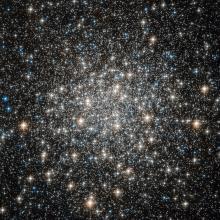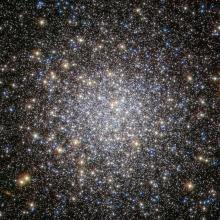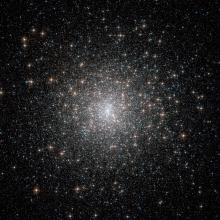Listen to today's episode of StarDate on the web the same day it airs in high-quality streaming audio without any extra ads or announcements. Choose a $8 one-month pass, or listen every day for a year for just $30.
You are here
Future Resident
Sagittarius marks the center of our home galaxy, the Milky Way. So the constellation is packed with stars, star clouds, and star clusters. But one of the clusters doesn’t belong to the Milky Way at all — at least not yet. It’s in a small, puffy galaxy on the far edge of the Milky Way’s disk.
Messier 54 is a globular cluster. It’s a ball-shaped region a few dozen light-years across, packed with hundreds of thousands of stars.
Native globulars are among the Milky Way’s oldest residents — they were born with the galaxy itself, more than 10 billion years ago. But a few of these clusters are interlopers — they were born in other galaxies, then were absorbed when their galaxies were consumed by the Milky Way.
For a long time, astronomers thought that M54 was a charter member of the Milky Way — one of its early globular clusters. A couple of decades ago, though, they found that it’s near the center of a newly discovered galaxy, the Sagittarius Dwarf, so it’s outside the Milky Way’s disk. But the Milky Way is pulling in the smaller galaxy, and eventually will incorporate all of its stars. So M54 will become a member of the Milky Way — one of its newest — and oldest — residents.
Sagittarius scoots low across the south on summer nights. Its brightest stars form the outline of a teapot, with clouds of stars rising from its spout like steam. M54 is at the lower left corner of the teapot, although you need a telescope to pick it out.
Script by Damond Benningfield





